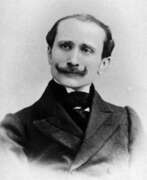Playwrights 19th century


Antoine Vincent Arnault was a French playwright, fable poet and statesman.
Arnault was one of the most popular playwrights of the French Revolution and the First Empire and, like many writers of the time, he was also politically active. He carried out commissions for Napoleon Bonaparte and served him faithfully throughout his life.
Arnault wrote many plays and poems, among which his poem "Listok" about the fate of the emigrant was especially popular, it was repeatedly translated into different languages, including Russian.
His son was the playwright Lucien Arnault (1787-1863).


Robert Browning was an English poet and playwright of the Victorian era.
Browning's father, a bank clerk in London, was a very accomplished man, a collector of books and paintings, an artist and a scholar. He gave his son the basics of Greek and Latin, as well as classical literature. Browning re-read many books from his father's extensive library and also attended classes at the University of London. In 1834 Robert Browning traveled to St. Petersburg and later visited Italy. Between
1832-46 he wrote his early long poems and most of his plays. Browning's first published work was "Pauline" (1833); this dramatic monologue was highly emotional. In 1835 he published the poems "Paracelsus" and in 1840 "Sordello," which are about men of great talent trying to come to terms with the demands of the world.
In 1868-69. Browning published his major work, a novel in verse, The Ring and the Book, based on the trial of a murder case in Rome in 1698. Grand in conception and execution, it was immediately well received by the public, and Browning became a major figure in the history of English poetry.


Louis Carrogis, better known as Carmontelle was a French artist, garden designer, architect, playwright and inventor.
Carmontelle was of simple origins but versatilely gifted. He wrote several plays and three novels, and created portraits of historical figures. He became famous for his painting of little Mozart at the clavier. In the service of Louis-Philippe I, Duke of Orléans, he was responsible for the theatrical performances for the family as stage designer and stage director.
Carmontelle is the planner and designer of one of the earliest examples of a French landscape garden in Paris, now known as Parc Monceau. In designing the garden, Carmontel rejected many of the fashionable trends in landscape design at the time, drawing inspiration from Japanese pleasure gardens and insisting on incorporating illusion and fantasy.
Carmontelle is also credited as the inventor of animated images. Translucent tape with landscapes depicted on it was slowly rolled from one roll to another against a backdrop of daylight, thus creating the illusion of walking through a garden.


Noël Peirce Coward was an English playwright, composer, director, actor, and singer, known for his wit, flamboyance, and what Time magazine called «a sense of personal style, a combination of cheek and chic, pose and poise».


Alphonse Daudet was a French novelist and short-story writer, best remembered for his sentimental tales of provincial life in southern France. Born in Nîmes in 1840, Alphonse Daudet's early life was marked by financial hardship, influencing much of his later work. He moved to Paris with his brother Ernest and quickly immersed himself in the literary world, publishing his first collection of poems, Les Amoureuses, at a young age.
Alphonse Daudet's career flourished with notable works such as Le Petit Chose, Tartarin de Tarascon, and Lettres de Mon Moulin, which highlighted the charm and simplicity of rural life in Provence. His storytelling, often infused with humor and satire, made significant contributions to French literature, capturing the essence of Provencal culture.
Despite his literary success, Alphonse Daudet's personal life was fraught with challenges, including a long-term illness that he bravely depicted in his later works. He passed away in Paris in 1897, leaving behind a legacy celebrated for its profound impact on regionalist literature and its vivid portrayal of French life and culture during the 19th century.
For those interested in the intricate tapestry of French literature and the enchanting allure of Provence, Alphonse Daudet's works offer a gateway to the past, brimming with the richness of its regional heritage and the timeless appeal of its narratives. To delve deeper into Daudet's life and explore his contributions to literature, subscribing to updates on related sales and auction events can be a rewarding pursuit for collectors and enthusiasts alike, ensuring they remain informed about opportunities to engage with his enduring legacy.


William Dunlap was an American playwright, theater director, artist, and historian.
William Dunlap was a pioneer of the young country's theater. He directed two of New York City's earliest and most famous theaters, the John Street Theater and the Theater in the Park. During his lifetime he directed over sixty plays, most of which were adaptations or translations of French and German works. But among them were some original ones based on American themes with American characters.
In 1832 Dunlap published A History of the American Theater in two volumes. In 1825, Dunlap co-founded the National Academy of Design and taught at its school. Even today, Dunlap is best known for his encyclopedic three-volume History of the Origin and Progress of the Art of Design in the United States. The book was published in 1834 and is now an invaluable source of information about artists, collecting, and artistic endeavors in the country of that historical period.


Hippolyte Jean Giraudoux was a French novelist, essayist, diplomat and playwright. He is considered among the most important French dramatists of the period between World War I and World War II. His work is noted for its stylistic elegance and poetic fantasy. Giraudoux's dominant theme is the relationship between man and woman—or in some cases, between man and some unattainable ideal.


Pierre Mac Orlan, real name Pierre Dumarchey, is a French writer, poet, screenwriter, playwright, artist and journalist.
Pierre Dumarchey spent his youth leading a bohemian lifestyle, but by the age of 20 he had already published several collections of short stories with his own illustrations. He socialized with many contemporary writers and artists, played the accordion, and many of his songs were quite popular in cabarets. In World War
I in 1916, Pierre Dumarchey was wounded, after which he worked as a war correspondent. In the late 1920s, he became an influential critic of film and photography. And later became a famous writer under the pseudonym Pierre Mac-Orlan. Based on his most famous novel Quai des Brumes ("Port of Shadows"), French director Marcel Carné made a movie of the same name in 1938.
In addition to his numerous novels, Mac-Orlan published under various pseudonyms in erotic magazines. Pierre Mac-Orlan was a very prolific writer: in 1969-1971, a collection of his works in 24 volumes was published, which, however, did not include his many erotic works.
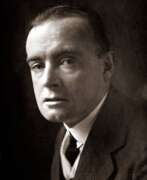

Hector Hugh Munro, known by his pen name Saki, is a British writer and journalist.
Born in Akyab, Burma (now known as Myanmar), Munro was sent to England to live with his grandmother after his mother died two years later. At the age of 20, he served as an officer in the colonial Burmese military police before returning to England.
In 1899 Munro published his only serious book under his own name, The Rise of the Russian Empire, and then began writing witty, mischievous, and sometimes macabre stories mocking Edwardian society and culture. He worked as a journalist for various publications, publishing political sketches in the style of Lewis Carroll. He is considered a master of the short story and is often compared to O. Henry and Dorothy Parker.
From 1902 to 1908 Munro worked as a foreign correspondent for The Morning Post in the Balkans, Russia, and Paris. Shortly thereafter, he would publish a collection of his short stories, The Chronicles of Chlodwig (1911) and The Unbearable Bassington (1912). One of Saki's best-known short stories, "Sredni Vashtar," was screened several times. At the age of 44, Munro enlisted as a volunteer and was soon killed by a sniper's bullet on the front lines of World War I.


Mercy Otis Warren was an American poet, satirist, playwright, historian, and essayist of the American Revolution.
Mercy Otis was born into a prosperous Cape Cod Island family and was immersed early in the tumultuous political events taking place in the country at the time. One of her brothers was political activist James Otis, who was involved in the American Revolution from the beginning. In 1754, Mercy Otis married farmer James Warren, who later served in the Massachusetts legislature (1766-78). Through her husband's political connections, Warren was personally acquainted with most of the leaders of the Revolution and was constantly at the center of events for more than two decades.
Combining her own convictions with her writing talent, Warren became a poet and historian of the revolutionary era. Her first incisive and polemical pieces in verse were published in a Boston newspaper. This was followed by the prophetic novel Defeat and other works. In 1790 she published a collection of her works, Poems, Dramatic and Miscellaneous, which included two new plays, The Sack of Rome and The Ladies of Castille. For a woman of the time, such publications were very daring, as female writers usually hid under pseudonyms.
Warren also corresponded extensively with politicians, including George Washington and Thomas Jefferson. In 1805, she completed a three-volume work entitled A History of the Rise, Progress, and Termination of the American Revolution. This book was the earliest work on historical events in the country. Its proximity to political leaders and major national events makes Mercy Warren's writings on the American Revolutionary period especially valuable.
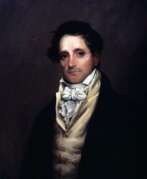

James Kirke Paulding was an American novelist, playwright, and statesman.
At the age of 18 in New York, he became friends with his brothers William and Washington Irving, and together with them began to write in the periodical satirical publication created by them "Salmagundi"). Paulding wrote several novels and plays, as well as many poems.


Kuzma Sergeyevich Petrov-Vodkin (Russian: Кузьма Сергеевич Петров-Водкин), a Russian painter, synthesized various traditions of global art, crafting a unique and deeply personal visual language. Born in 1878 in Khvalynsk, Saratov oblast, Russian Empire, Petrov-Vodkin is celebrated for his innovative approach to perspective, color, and composition, which positioned him as a pivotal figure in the art world of his time. He passed away in 1939 in Leningrad, now known as St. Petersburg, Russia.
Petrov-Vodkin's education in the arts took him from the Baron Stieglits School in Saint Petersburg to the Moscow School of Painting, Sculpture, and Architecture, where he was mentored by notable artists such as Valentin Serov. His studies abroad, including in Munich under Anton Ažbe, further enriched his artistic development. Notably, his marriage to Maria Jovanovic in Paris in 1906 marked a significant personal chapter, providing him with a lifelong companion and collaborator.
His work is distinguished by the use of "spherical perspective," a technique that distorts the drawing to emphasize the globe's curvature, making the viewer feel simultaneously distant and intimately close to the subject. This method, influenced by Byzantine iconography's inverted perspective, is evident in works like "Death of a Commissar" and "In the Line of Fire." Petrov-Vodkin's palette darkened over time, and his subjects diversified to include still life and portraiture, reflecting a broader exploration of theme and form. Despite facing health challenges, including pulmonary tuberculosis which limited his painting in later years, he remained prolific in other creative avenues, including literature, where his semi-autobiographical works are held in high regard.
His legacy is enshrined in the Russian Museum in St. Petersburg, which houses the largest collection of his works and dedicates a room to his art in their permanent exhibition. Additionally, a memorial museum in his hometown of Khvalynsk pays tribute to his contributions to Russian and Soviet art.
For collectors and art and antiques experts intrigued by Petrov-Vodkin's profound impact on Russian art, signing up for updates can ensure access to the latest sales and auction events related to his oeuvre. This subscription is a gateway to exploring the depth and breadth of Petrov-Vodkin's artistic achievements and ensuring enthusiasts are well-informed of opportunities to engage with his work.


Edwin Arlington Robinson is an American poet, writer and playwright. He won the Pulitzer Prize three times.
Edwin did not finish his studies at Harvard, but in his youth he wrote a lot, experimenting with translations of Greek and Latin poets, sent his poems for publication in different editions, not always successfully. In 1904, Robinson's poems were seen by President Theodore Roosevelt and gave the poet his way.
Although much of Robinson's poetry deals with failed lives, some critics consider his work to be life-affirming. His Collected Poems (1922) won the first Pulitzer Prize ever awarded to poetry. In 1925, Robinson won a second Pulitzer Prize for his poem "The Man Who Died Twice," the story of a street musician whose only musical masterpiece is a lost after a night of debauchery. And in 1928, Robinson won the Pulitzer Prize again - for his long poem "Tristram," one of a series of poems based on the legends of King Arthur.
Robinson was also nominated four times for the Nobel Prize in Literature, and in 1927 he was elected a member of the American Academy of Arts and Letters.
Although Robinson was one of the most prolific American poets of the early 20th century, he is now remembered for a few short poems. The poet was dedicated to his art and led a solitary life. Edwin Robinson's works have been translated into many languages of the world, including Russian.


George Bernard Shaw was an Irish playwright, novelist and literary critic, socialist propagandist and journalist, winner of the 1925 Nobel Prize for Literature.
George Bernard was born into a poor noble family and, growing up, suffered greatly from that poverty. After a decade of failure on the literary field, Bernard became an active member of the Fabian Society, a middle-class socialist group founded in 1884, which sought the gradual transformation of English society.
He began working as a journalist and writing plays, which soon enough became popular. In The Man and the Superman, Shaw laid out his philosophy that humanity is the last stage of a purposeful and eternal evolutionary movement of "life force" toward ever higher forms of life. By far his most popular play is Pygmalion, a humane comedy about love and the English class system. But George Bernard Shaw was not only the best comic playwright of his time. Some of his stage works - Caesar and Cleopatra, The Man and Superman, Major Barbara, House of Broken Hearts, and St. Joan - are highly serious and refined in their prose.
Shaw was also a bold pamphleteer, a popular and widely read music and theater critic of his generation, a lecturer and essayist on politics, economics and sociology. In the course of his long and prolific life Bernard Shaw shaped the political, economic and social worldviews of several generations.
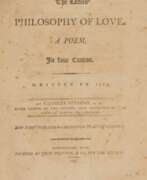

Charles Stearns was an American clergyman and doctor of philosophy.
Rev. Charles Stearns graduated from Harvard College and served the Congregational Church in Lincoln from late 1781 until his death. Several of his sermons were printed in the early 19th century.
In addition, Stearns was principal of the Liberal School, which opened in early 1793, a relatively progressive coeducational institution. While working at the school, Stearns wrote and published a number of works related to education, including Dramatic Dialogues for the Use of Schools (1798), a collection of thirty original plays that were performed by students.


Leonhard Steiner was a Swiss industrialist, artist, and playwright.
Leonhard Steiner was the son of a wealthy silk manufacturer and, having artistic and musical inclinations, was forced to take over his father's business. In the mid-1870s, among other duties, he was president of the Zurich Stock Exchange and served as president of the Exchange Association, but his activities in this field failed.
Steiner was forty-six years old when he decided to devote himself fully to painting and achieved a certain skill. He even managed to feed his family of ten through this labor. He painted high-altitude landscapes, which were very popular. Steiner also created several comedies, edited a Swiss-German dictionary and was an expert in the dialect of the city of Zurich. His work was also closely linked to the musical life of the city, as he was the longtime president of the men's choir. To this day, Steiner remains a highly respected man in Zurich precisely because of his work in the arts.


Royall Tyler, real name William Clark Tyler, was an American politician, lawyer and judge, playwright, essayist and educator.
He graduated from Harvard University, was admitted to the bar, and in 1801 was appointed a justice of the Vermont Supreme Court. In 1811, Tyler was appointed professor of jurisprudence at the University of Vermont.
Royall Tyler is best known today as the author of the first American comedy, Contrast, which premiered in 1787 at the John Street Theater. This play is the first to feature a Yankee character, a character native and familiar to local audiences, and the forerunner of many such in later years.


Oscar Fingal O'Flahertie Wills Wilde - Irish writer, poet, philosopher and playwright, a bright representative of the literature of the Victorian period.
Oscar's parents were fond of literature and history, gave their son an excellent education. After graduating from Oxford University, Oscar moved to London, where he quickly entered the circle of secular society. His first book, a collection of poems, was published in 1881. Over the next year, the aspiring writer traveled across America with lectures on art. Then he traveled to France, where he met key figures of French literature of the time - Victor Hugo, Paul Verlaine, Emile Zola and others. Returning to his homeland, Oscar married, thanks to which his children's fairy tales appeared. His popularity grew rapidly, his work was favorably reviewed by Bernard Shaw.
Next, "The Crime of Lord Arthur Seville", "The Canterville Ghost", "The Sphinx without a riddle" were written. In 1890 Oscar Wilde wrote the novel "The Portrait of Dorian Gray", which was considered immoral in high society, but it brought the author the greatest fame. This novel is still considered a classic of world literature to this day. In the early 1890s Oscar Wilde wrote comedy plays "Lady Windermere's Fan", "A Woman Not Worth Watching", "An Ideal Husband" and "How Important It Is to Be Serious". In them, the author shows himself a master of witty dialog. During his life, Wilde wrote nine plays, one novel, many poems, stories and essays.
Bright and full life of a successful and talented writer ended when he met Lord Alfred Douglas. For this scandalous connection with the man, Oscar Wilde was sentenced to two years in prison. After leaving prison, he settled in France under an assumed name, abandoned by everyone. He wrote his last work, the autobiographical "Ballad of Reading Prison" two years before his death at the age of 46.
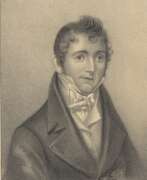

Samuel Woodworth was an American writer and poet, playwright and journalist.
After completing his apprenticeship as a printer, Woodworth traveled to New Haven, Connecticut, and worked for the Connecticut Herald newspaper. During the War of 1812, he edited a weekly newspaper called The War and others. He also wrote several successful operettas.
Samuel Woodworth was a popular poet in the 19th century and is remembered today as the author of the sentimental poem "The Old Oak Bucket".






















